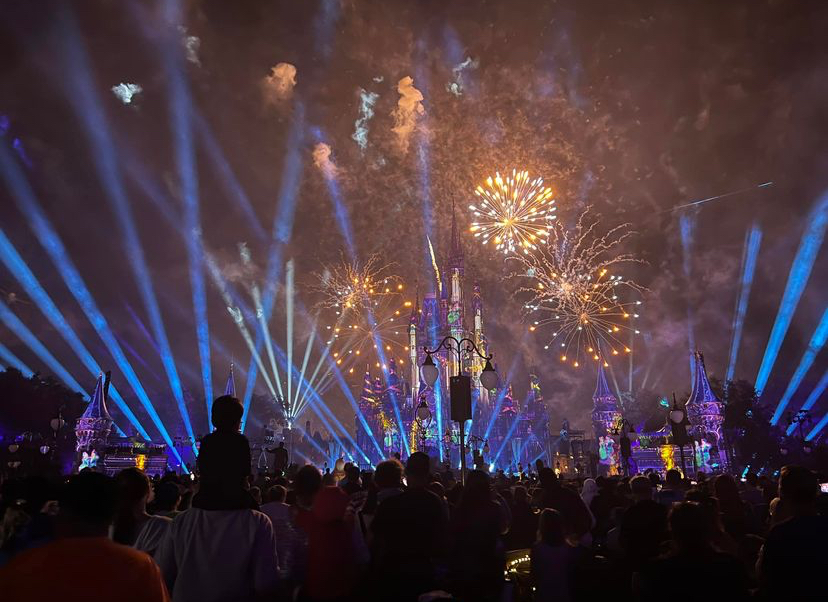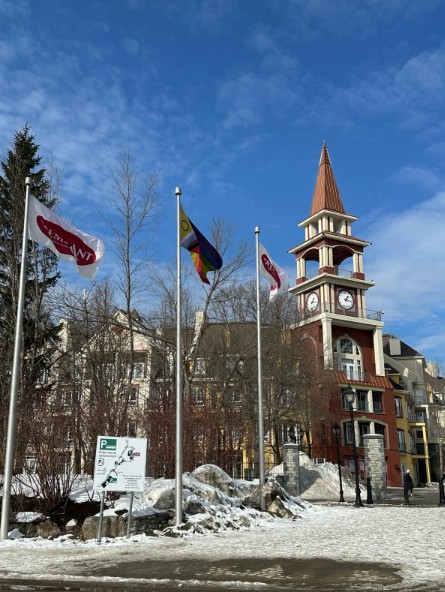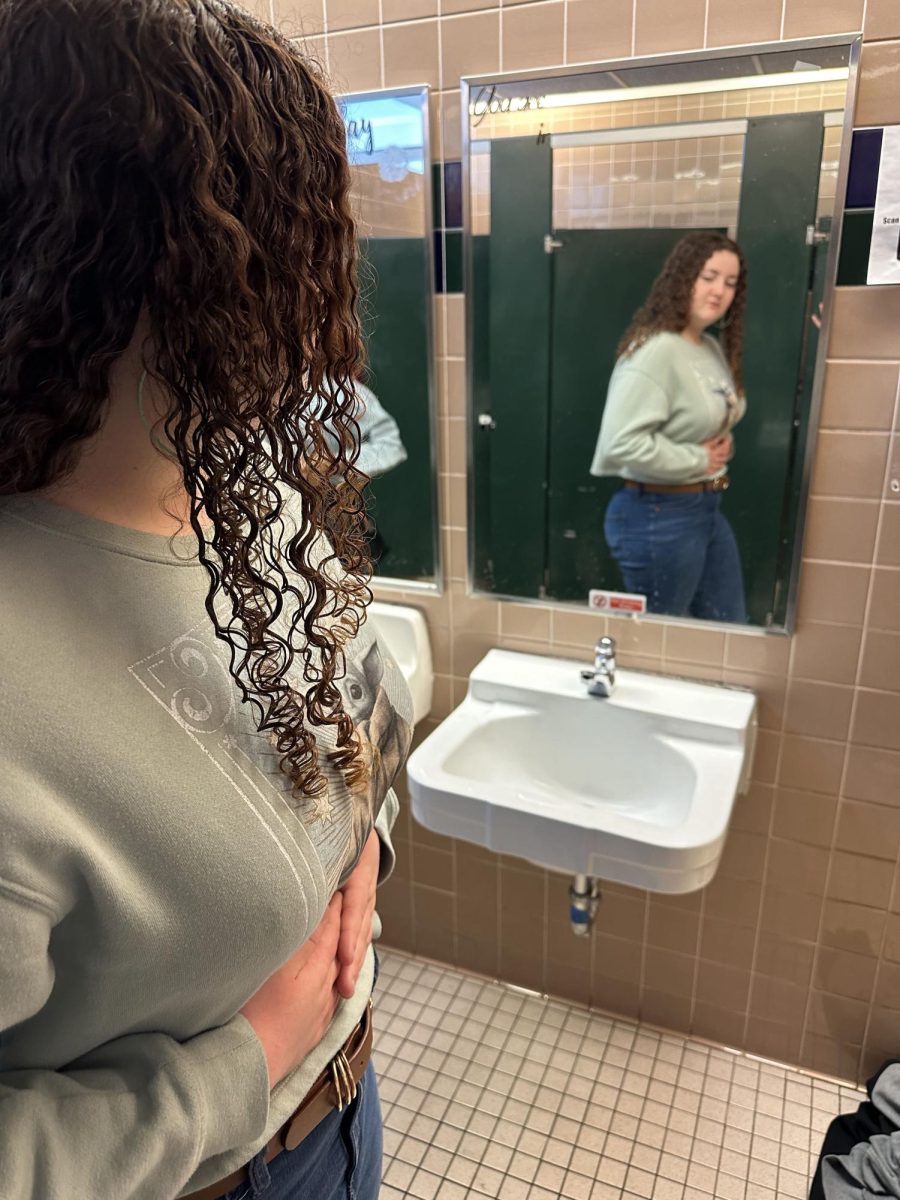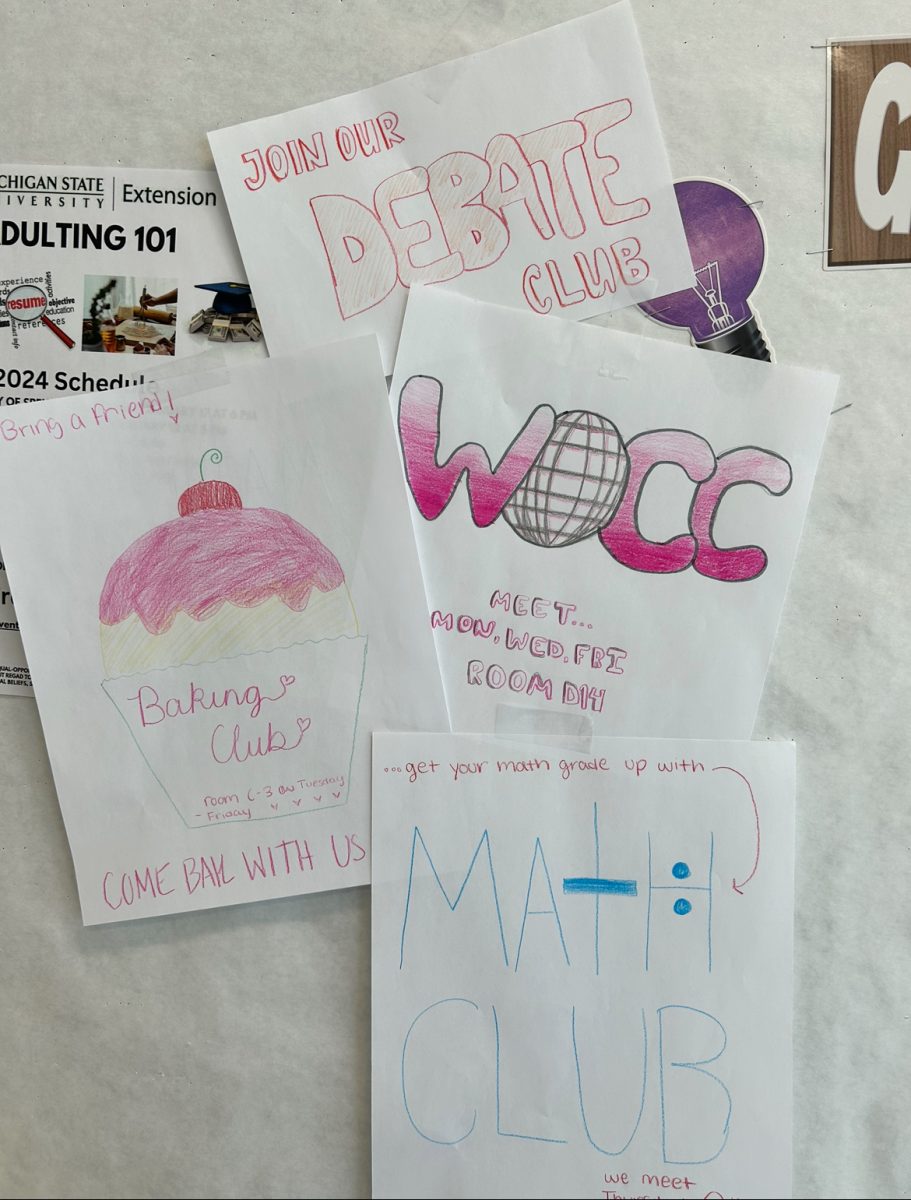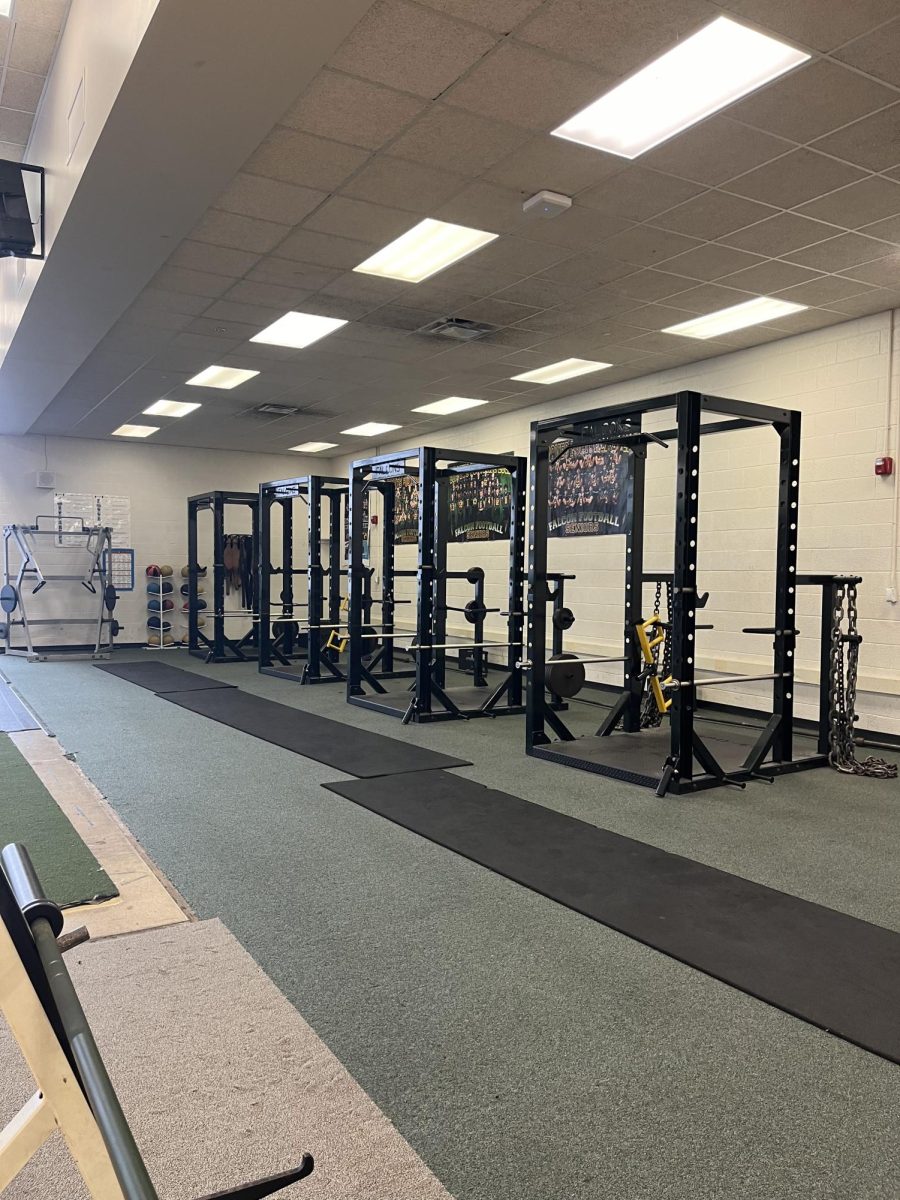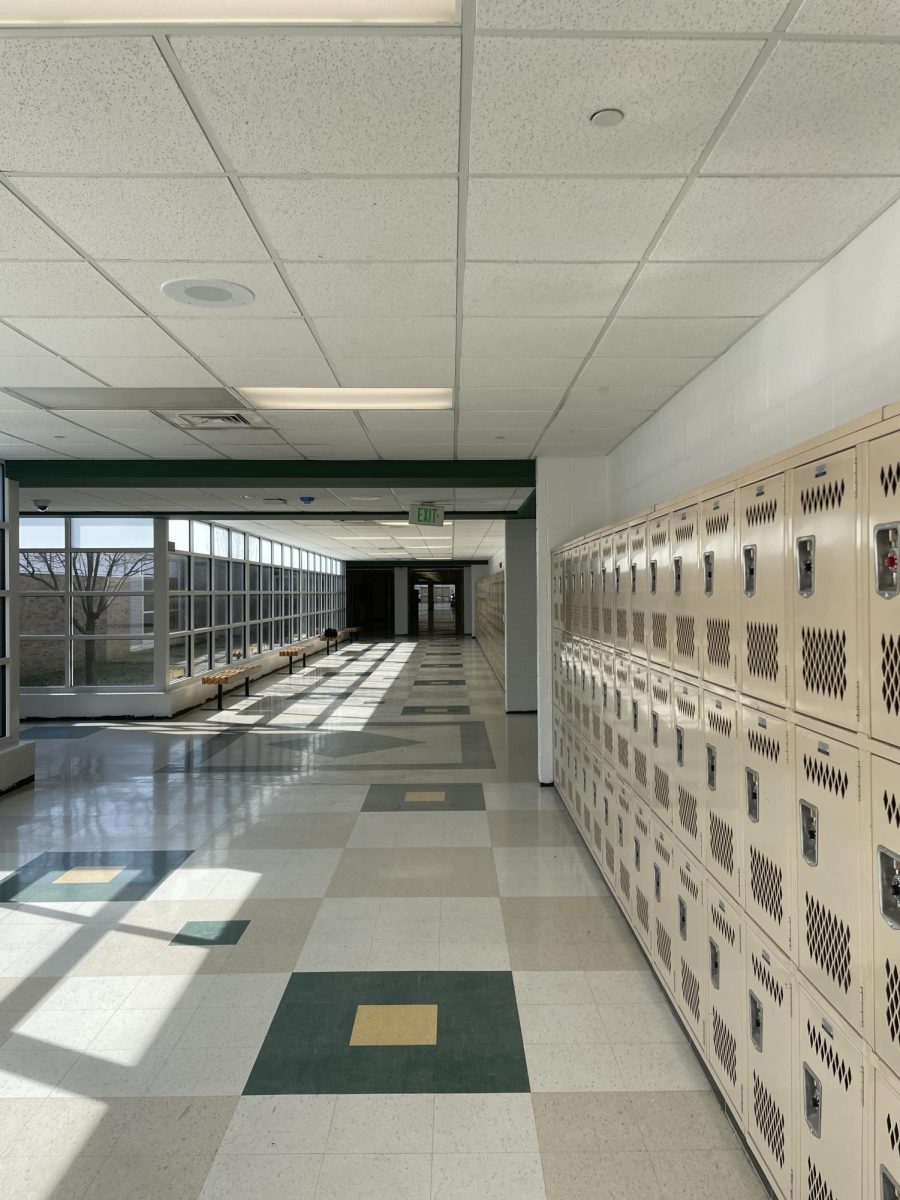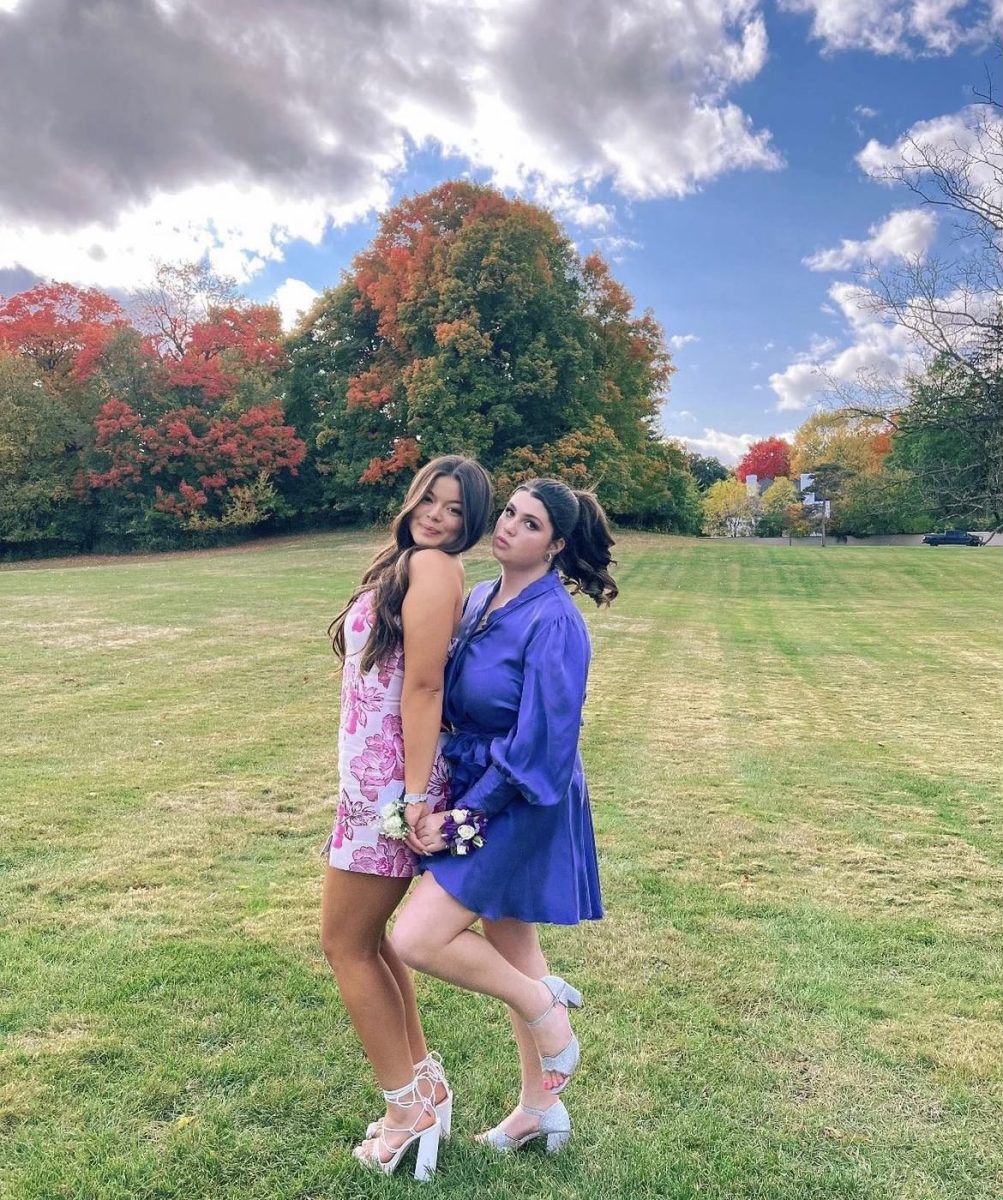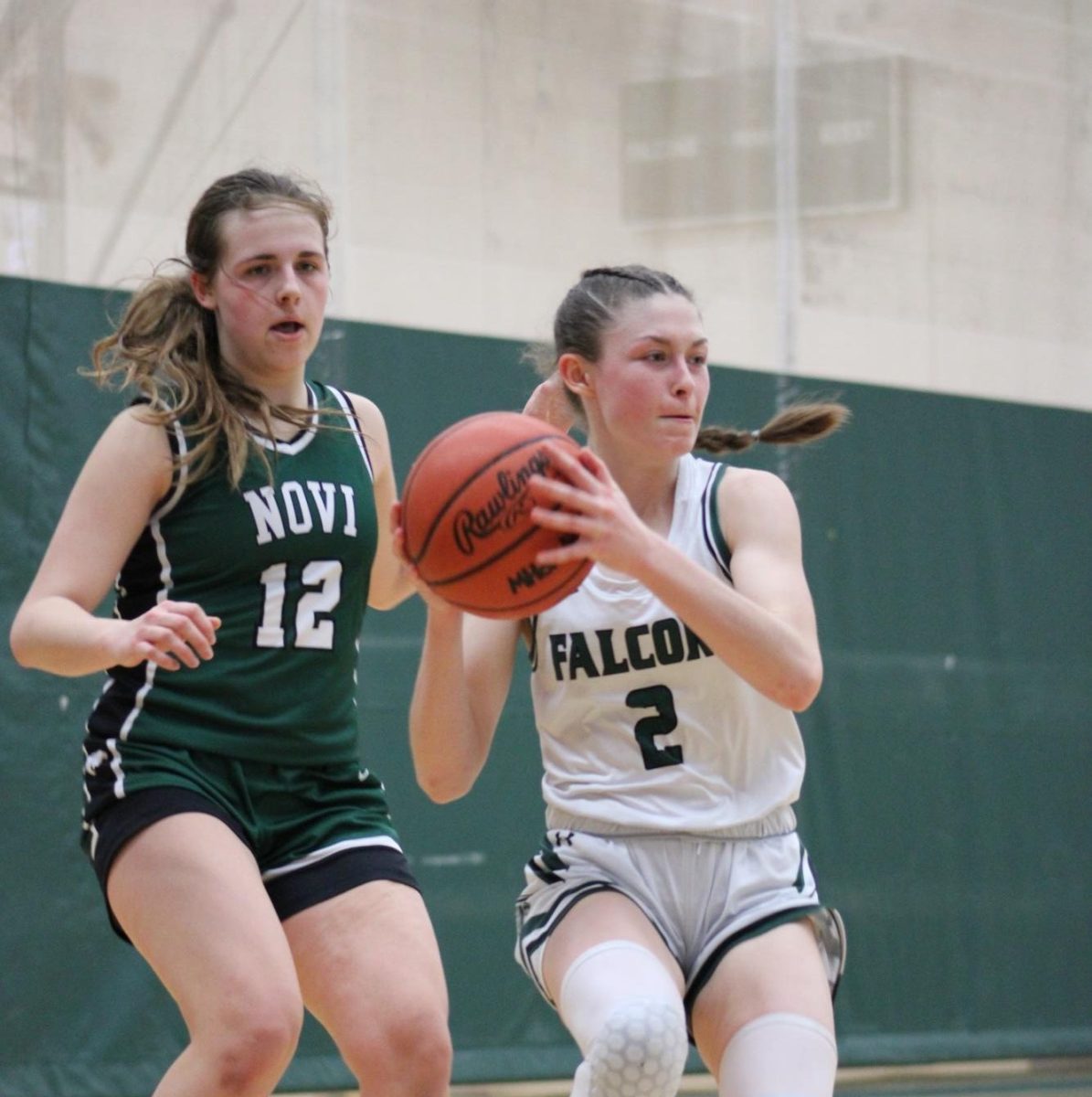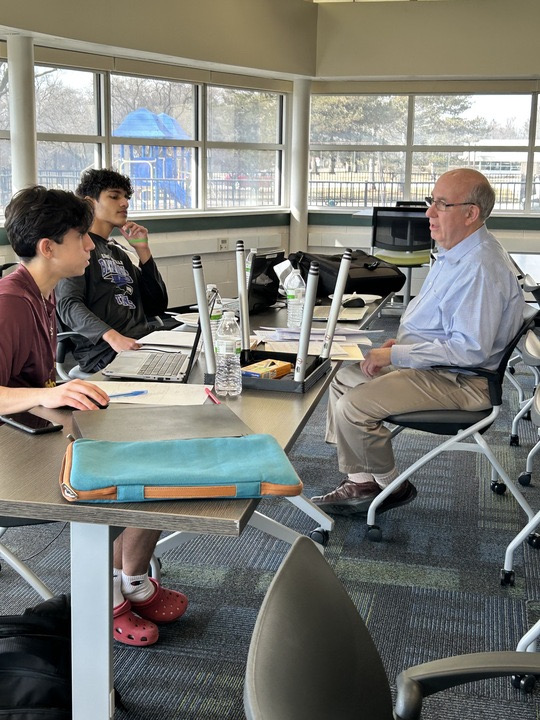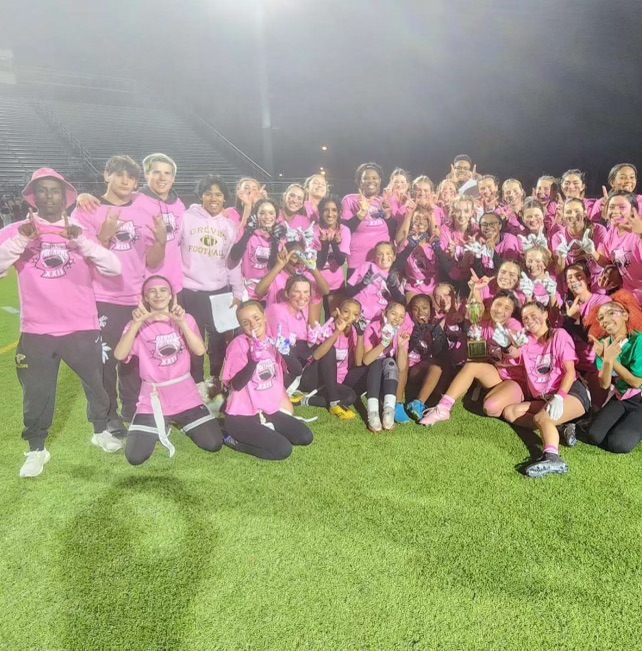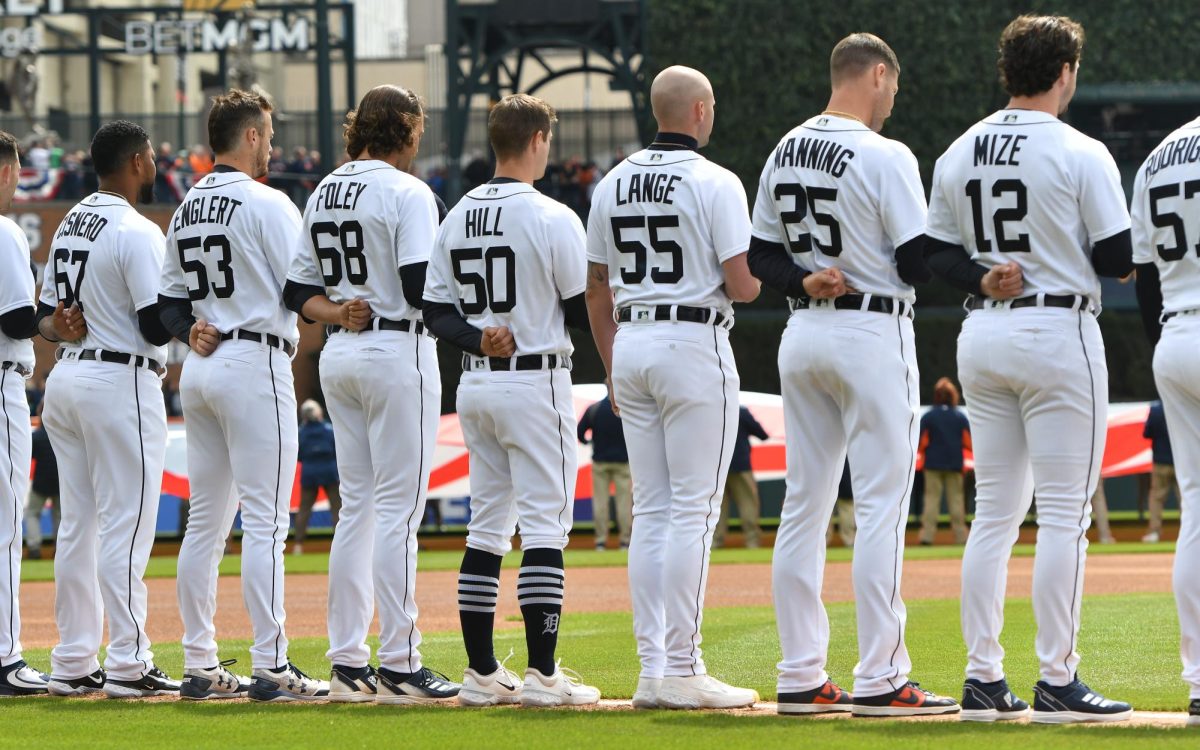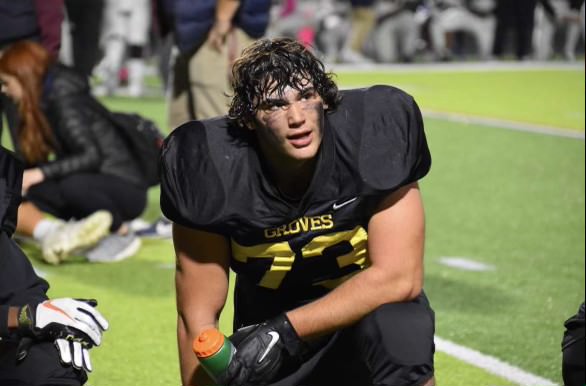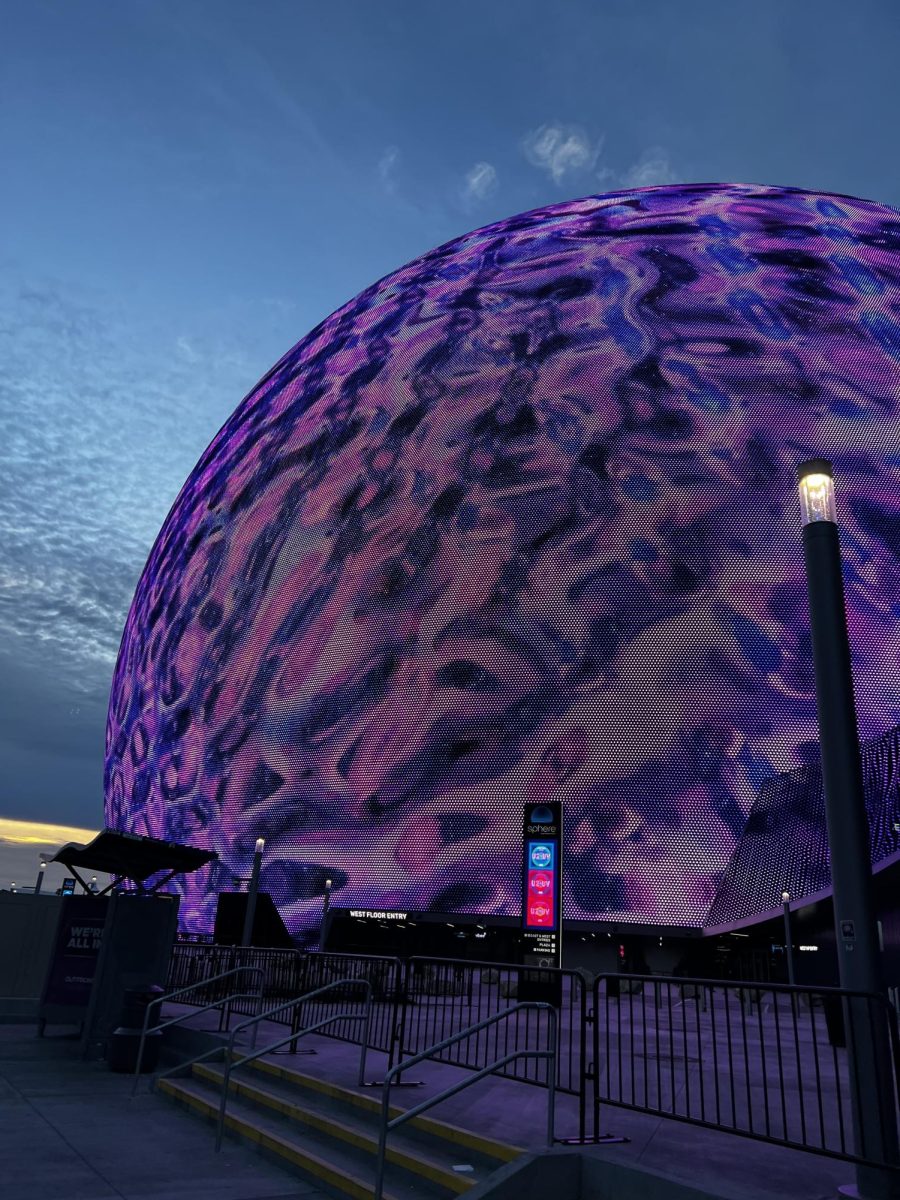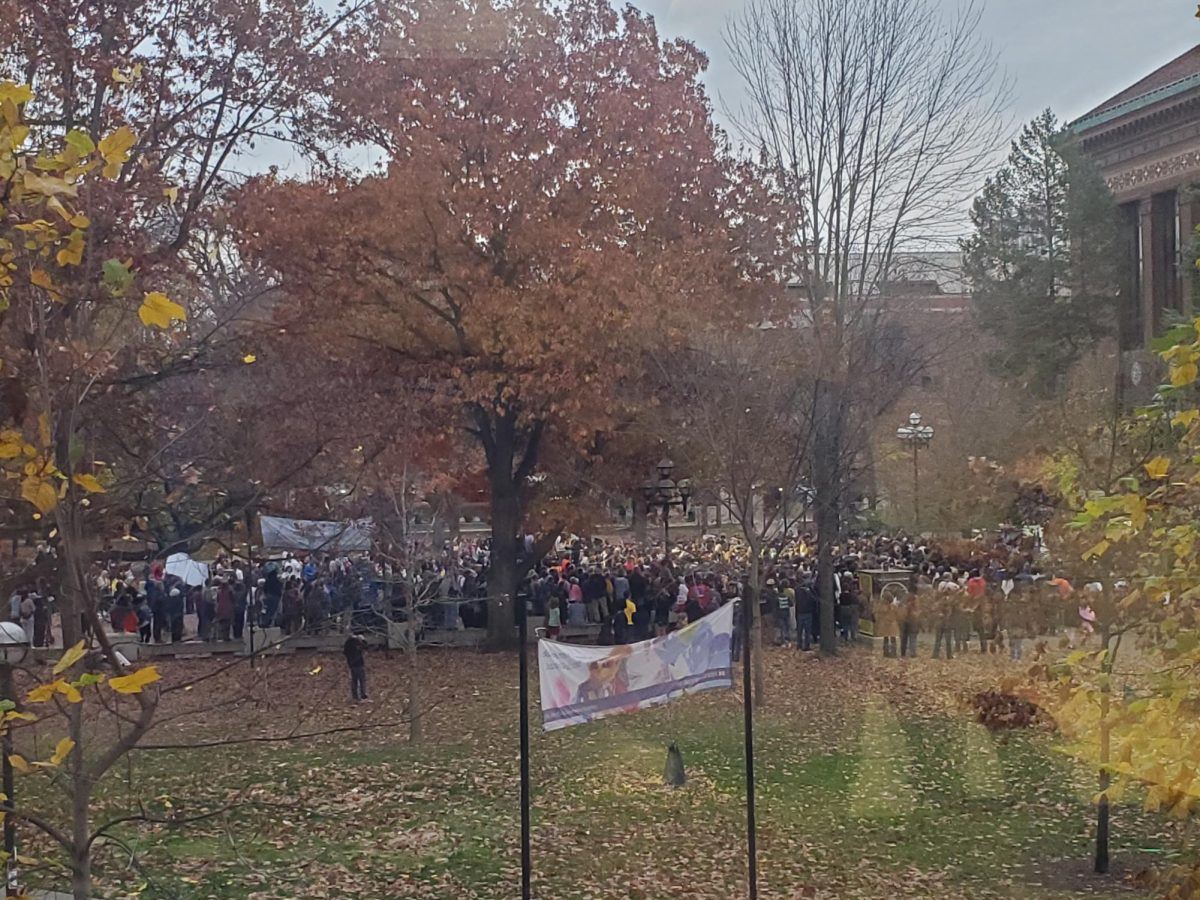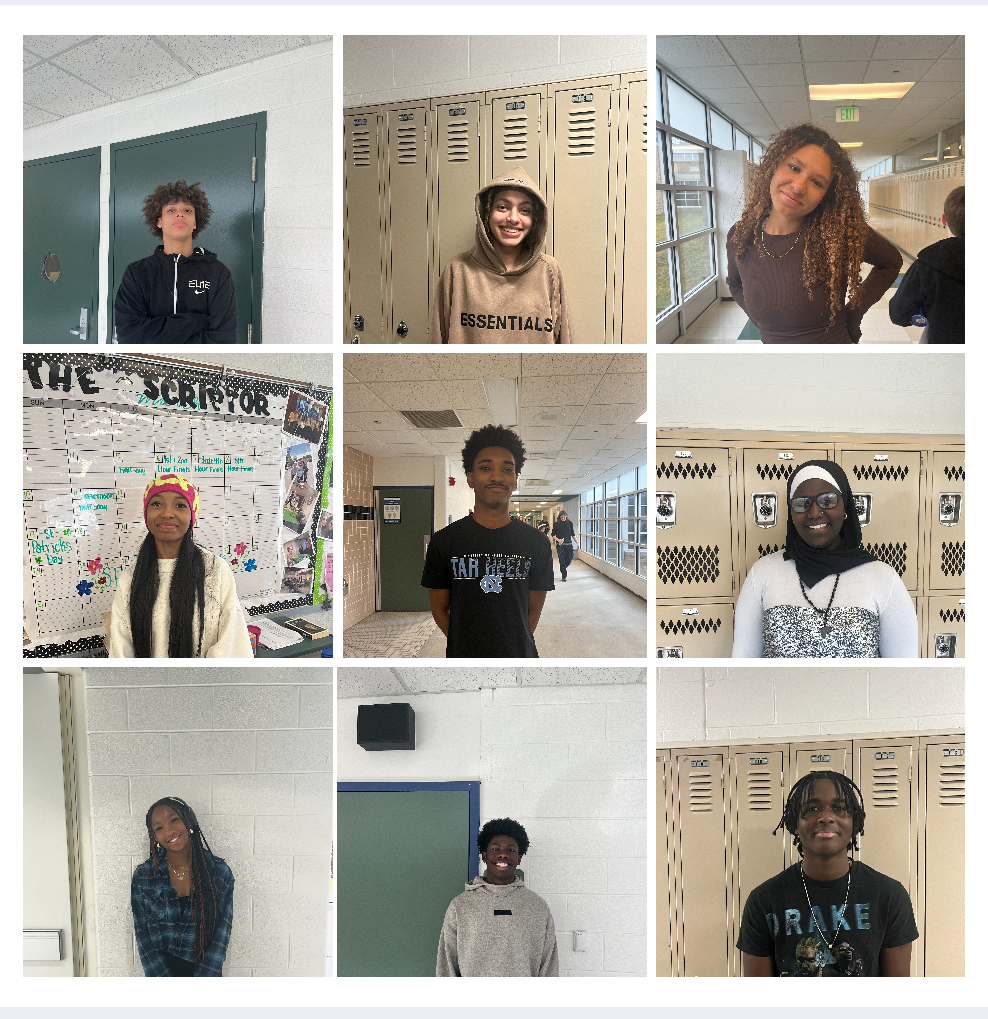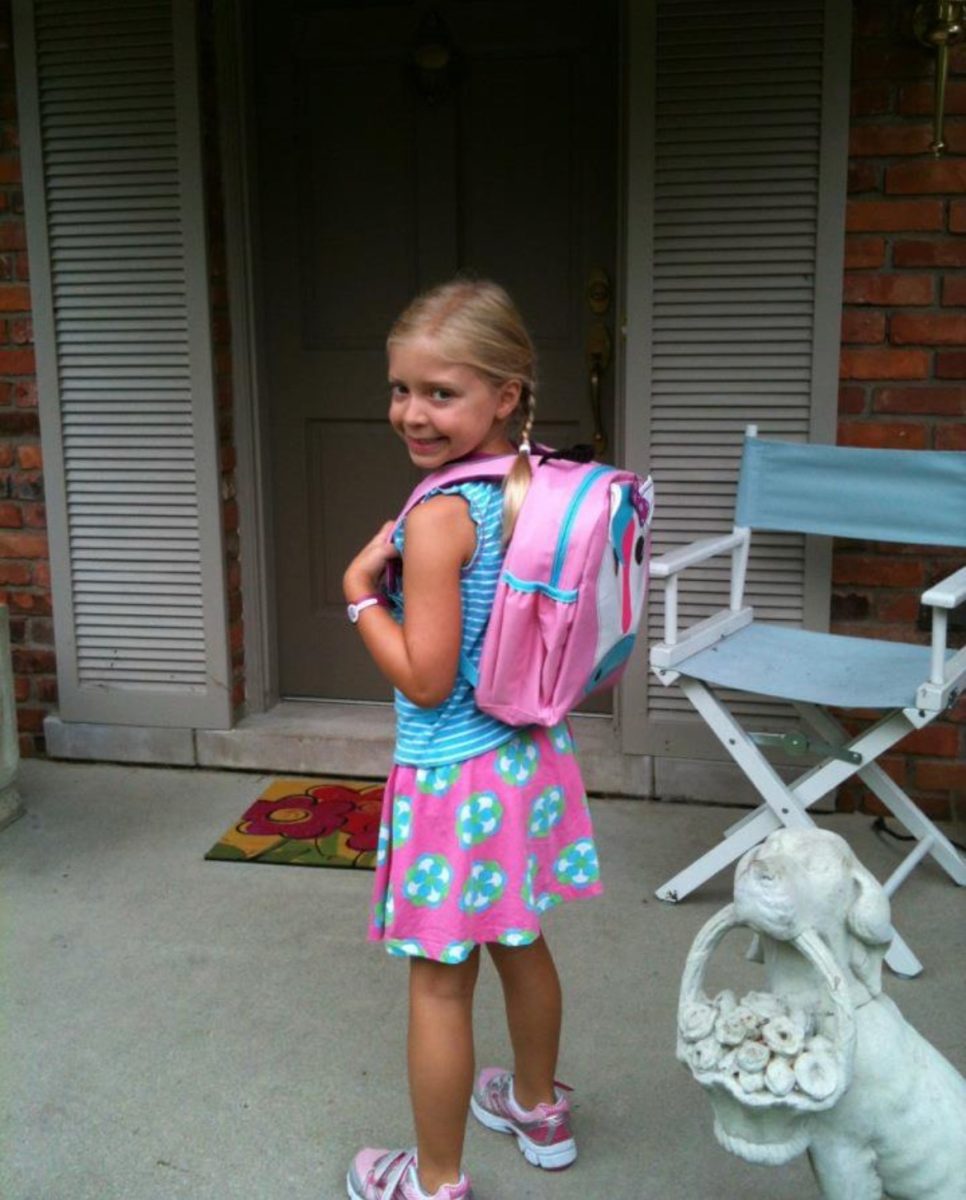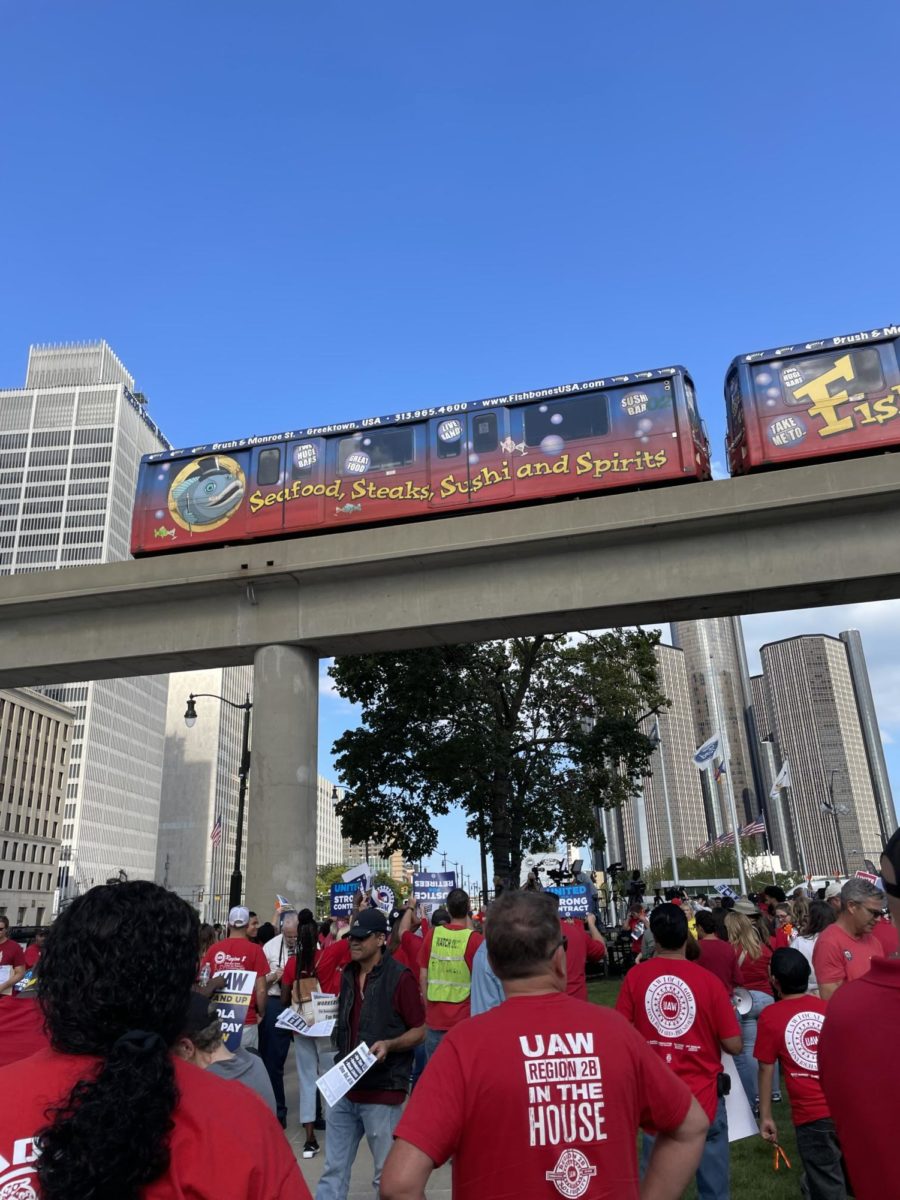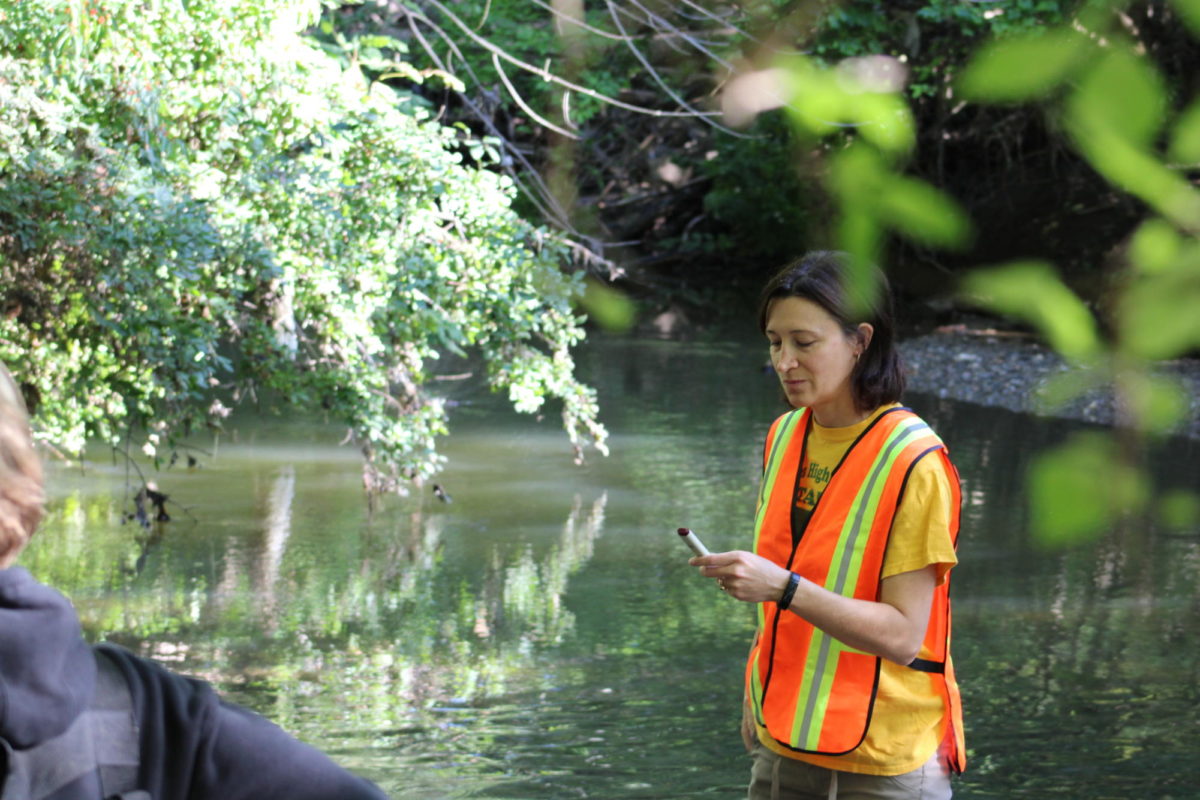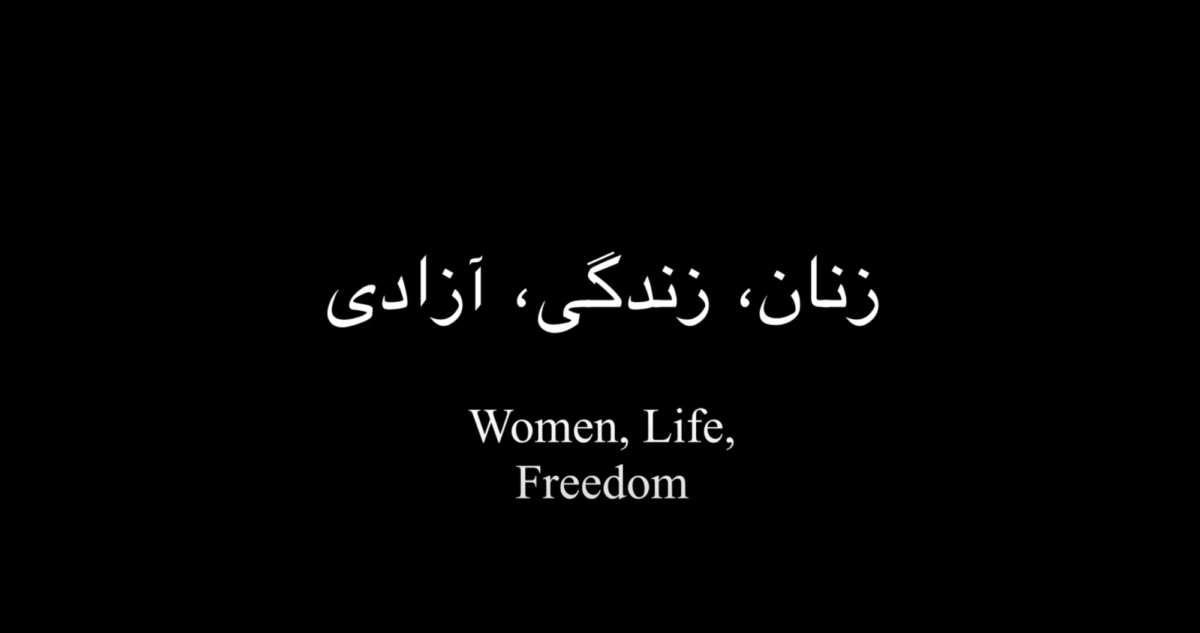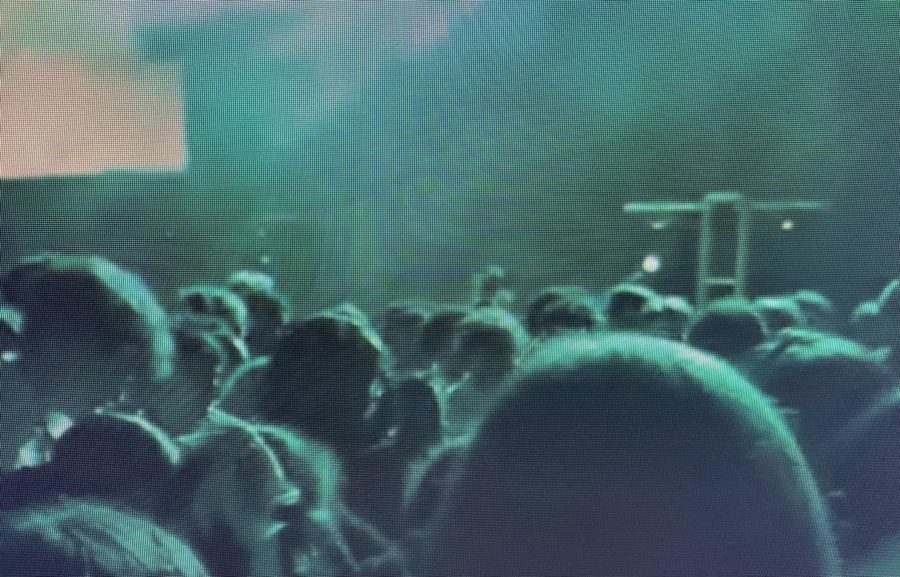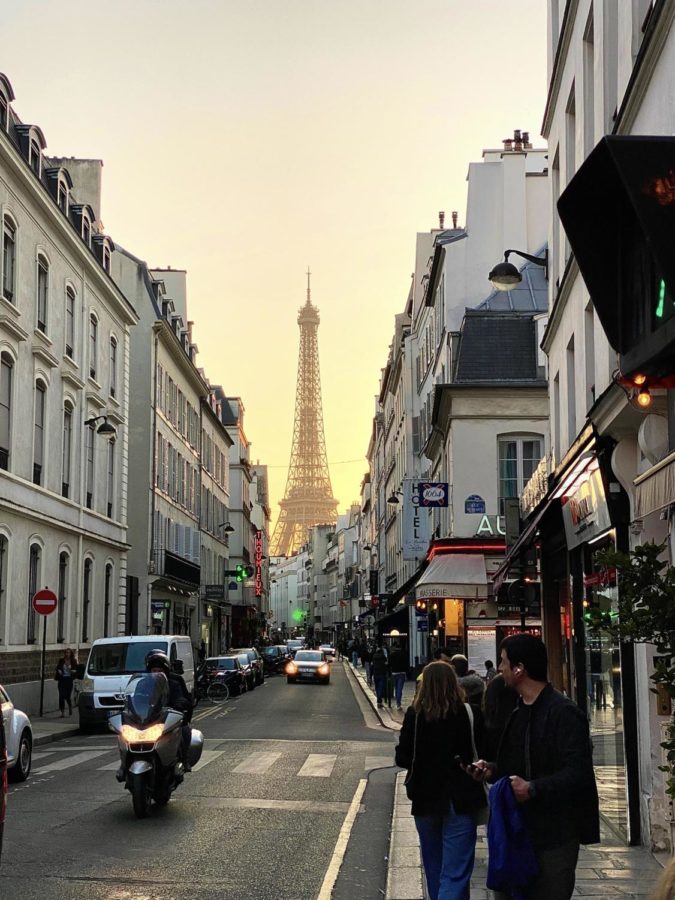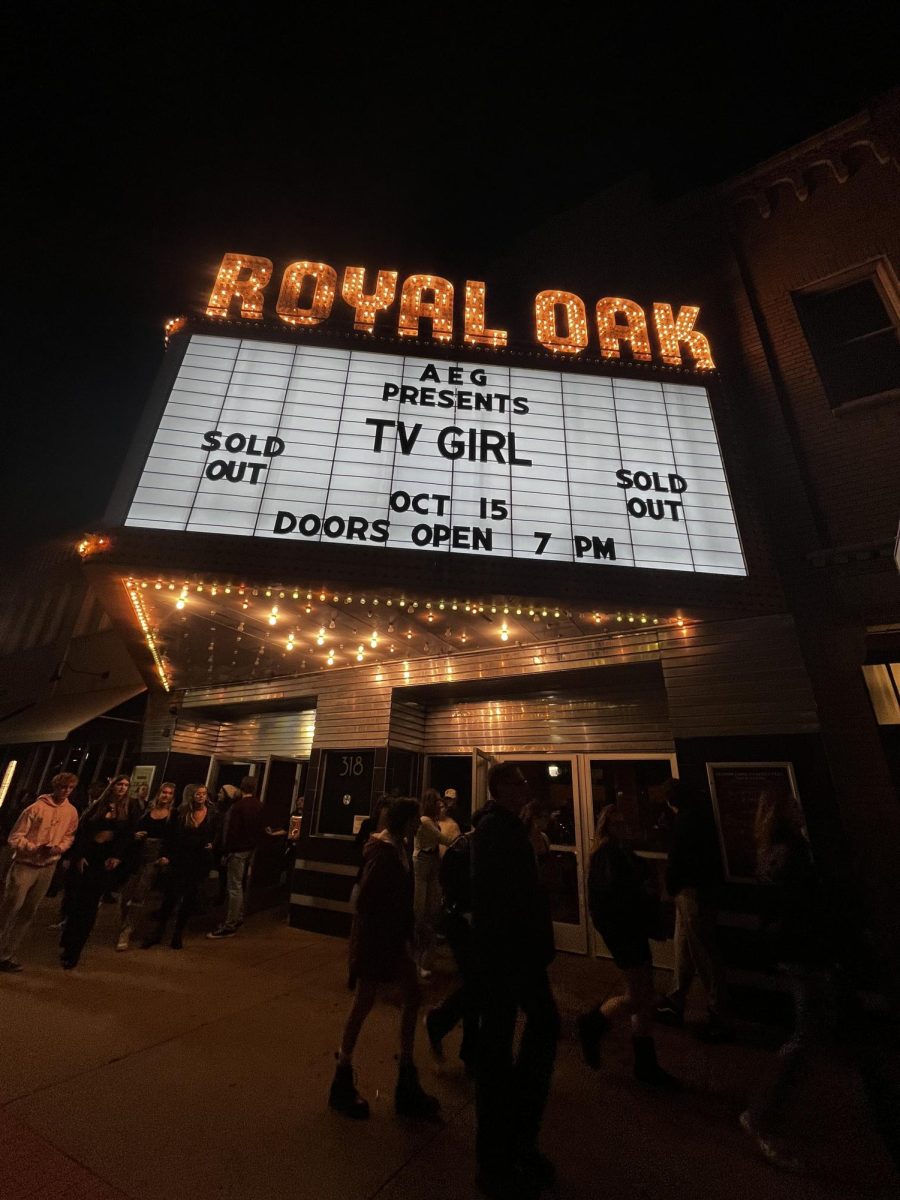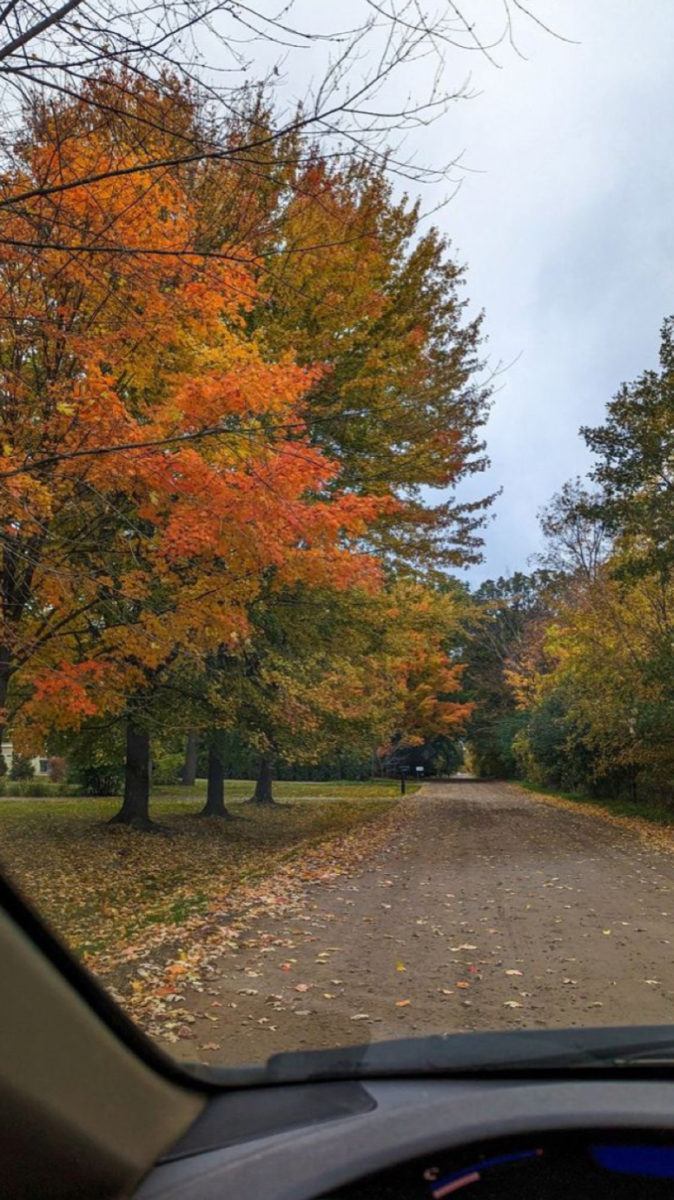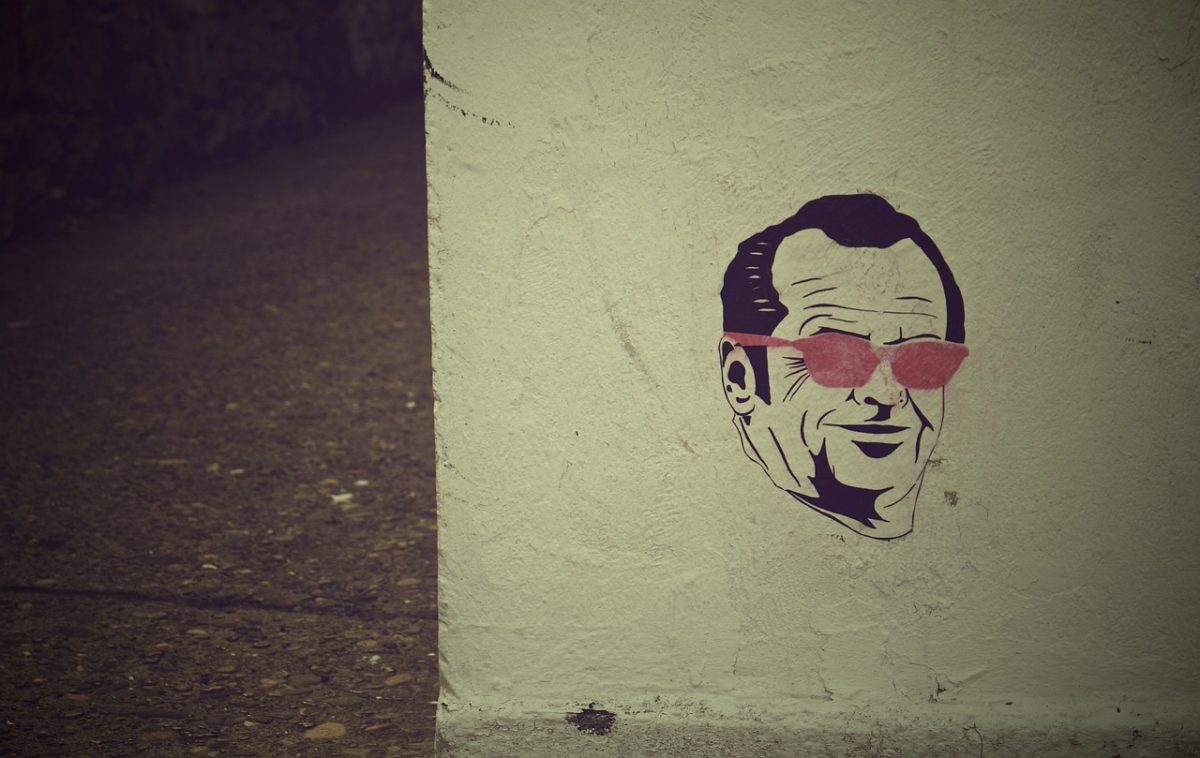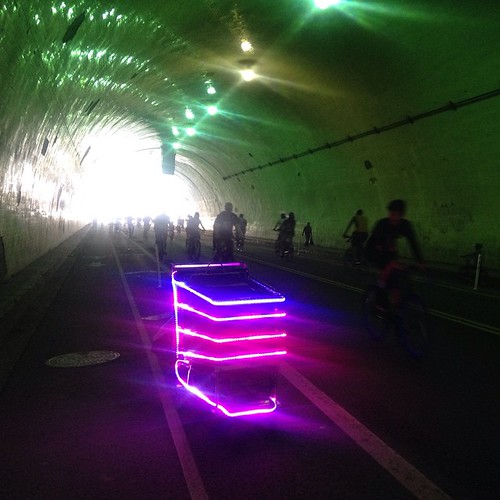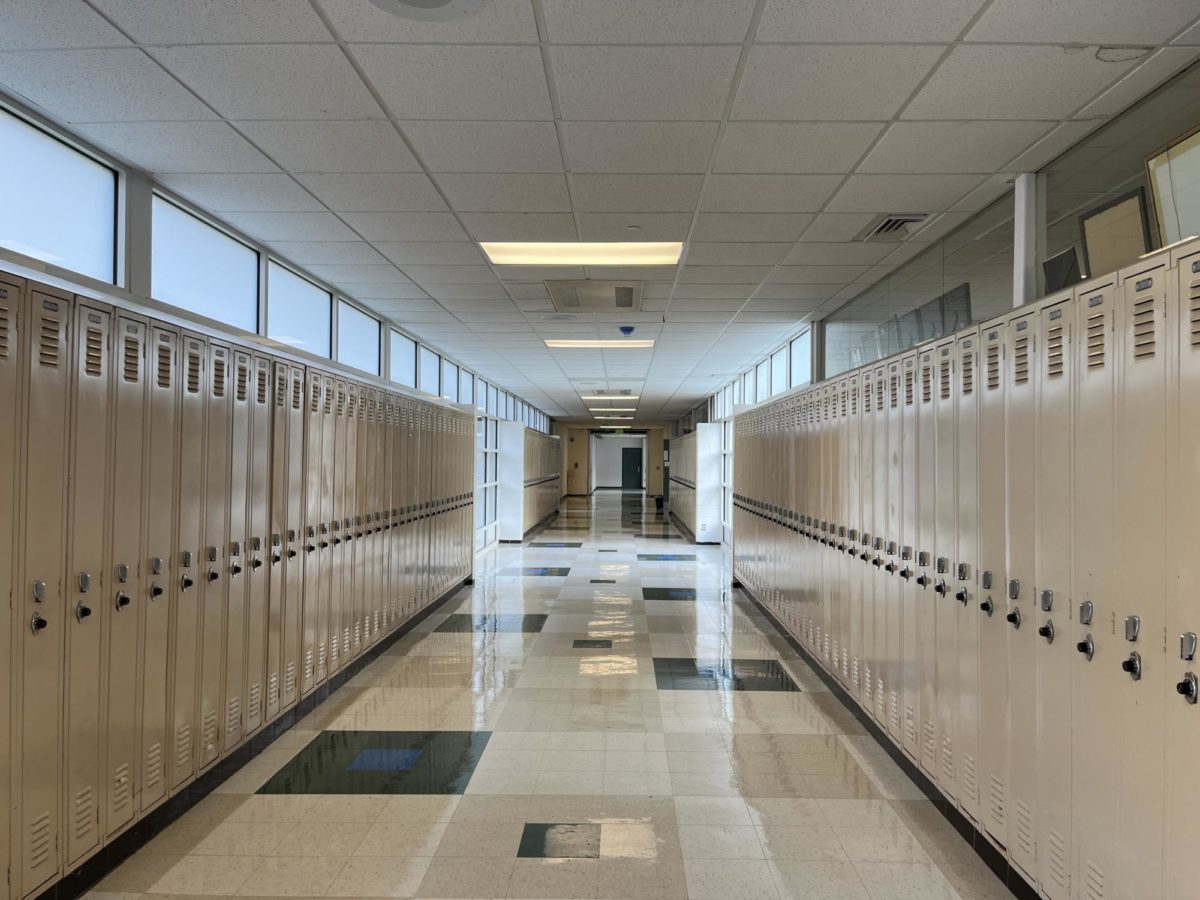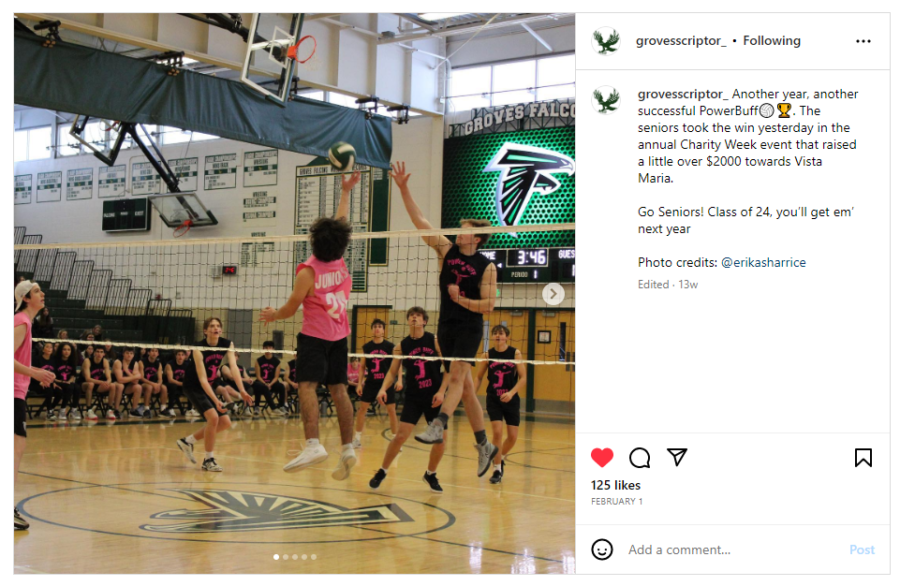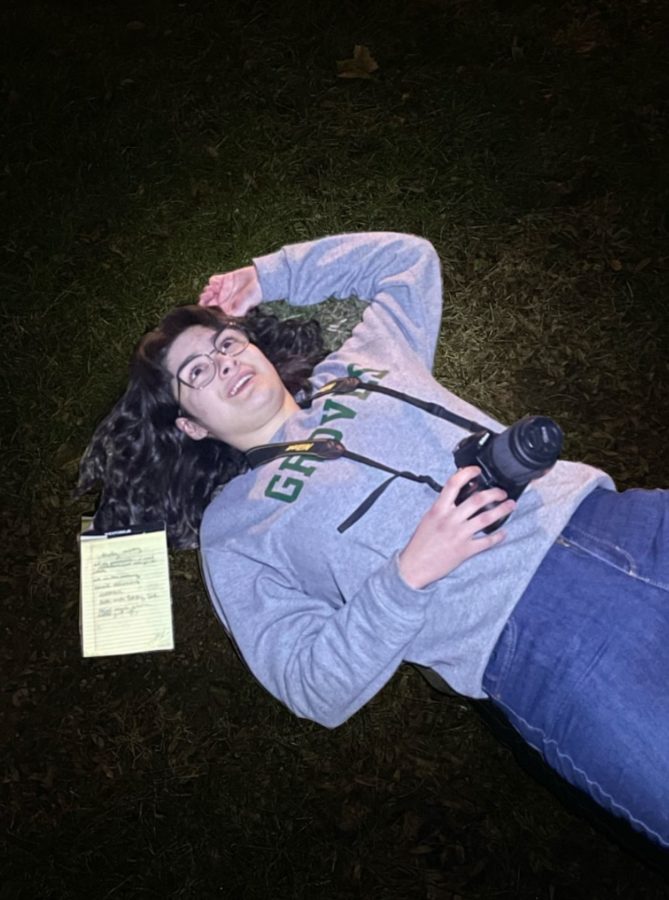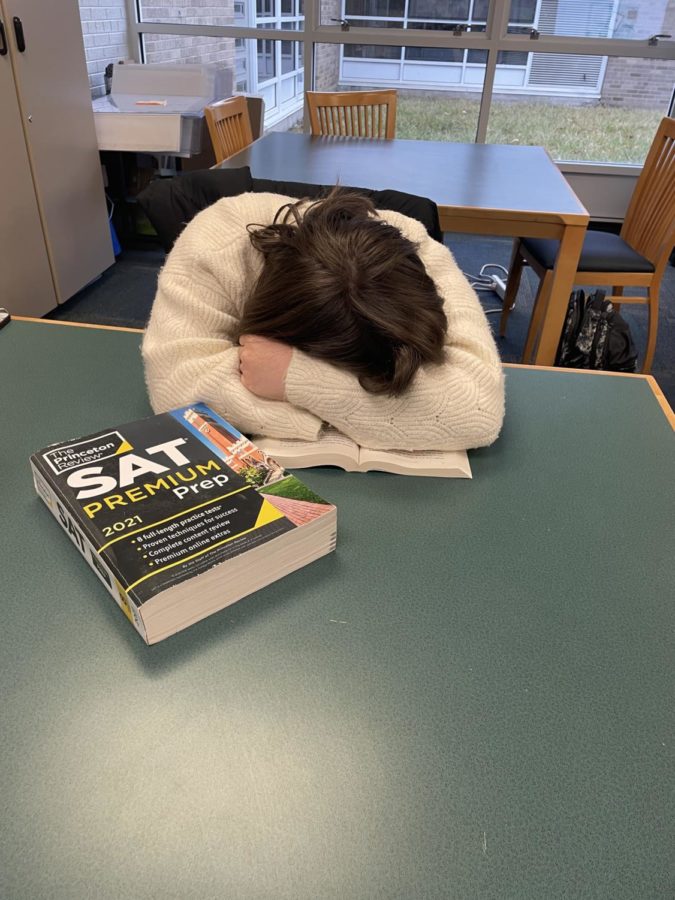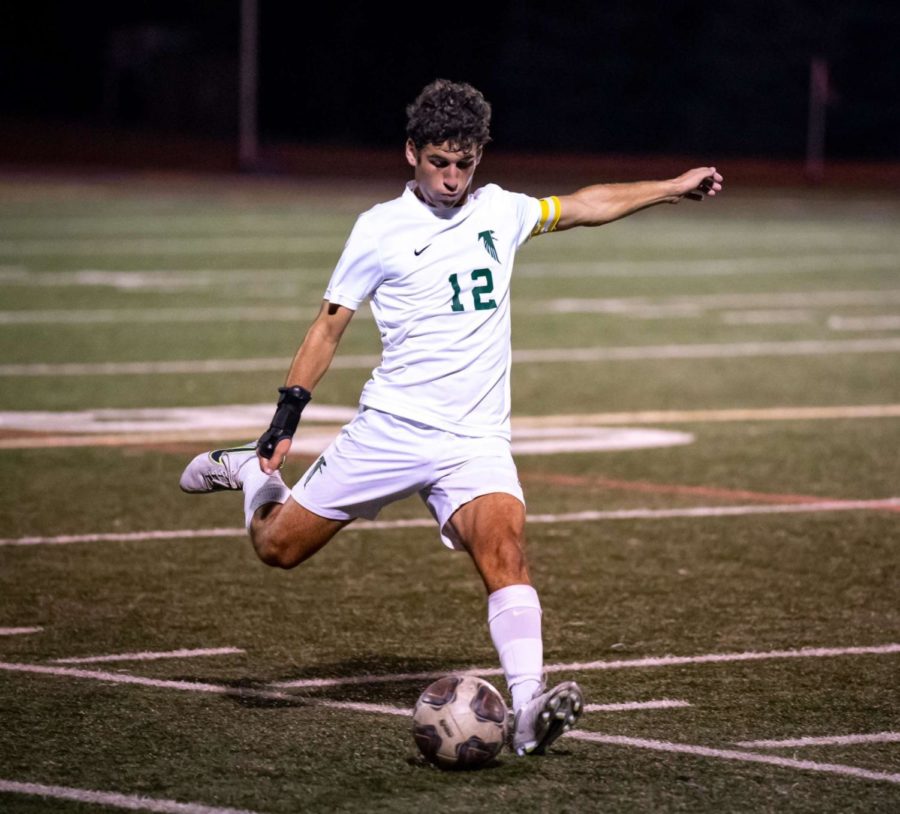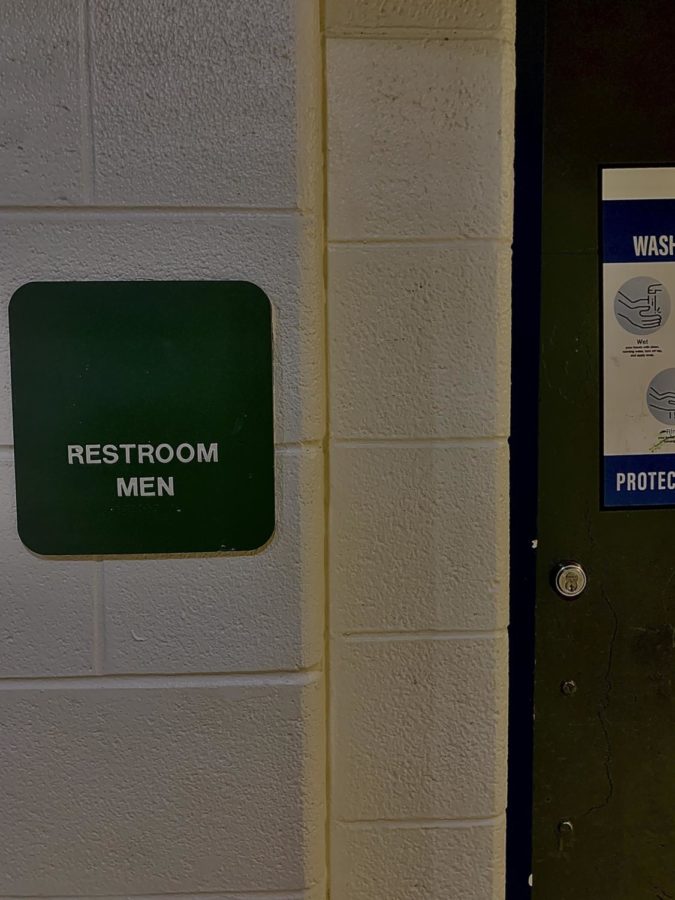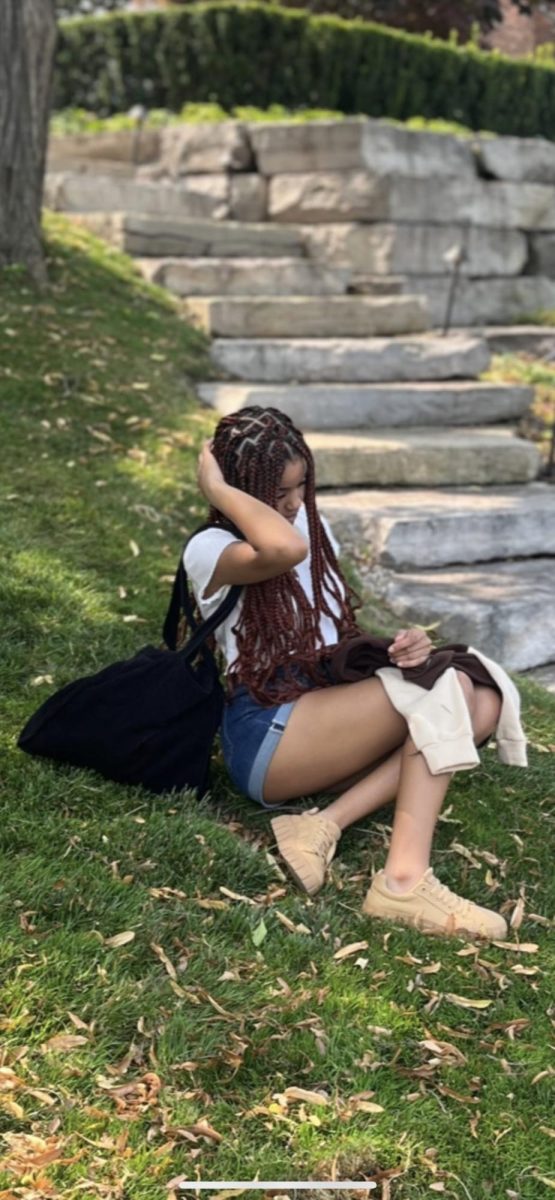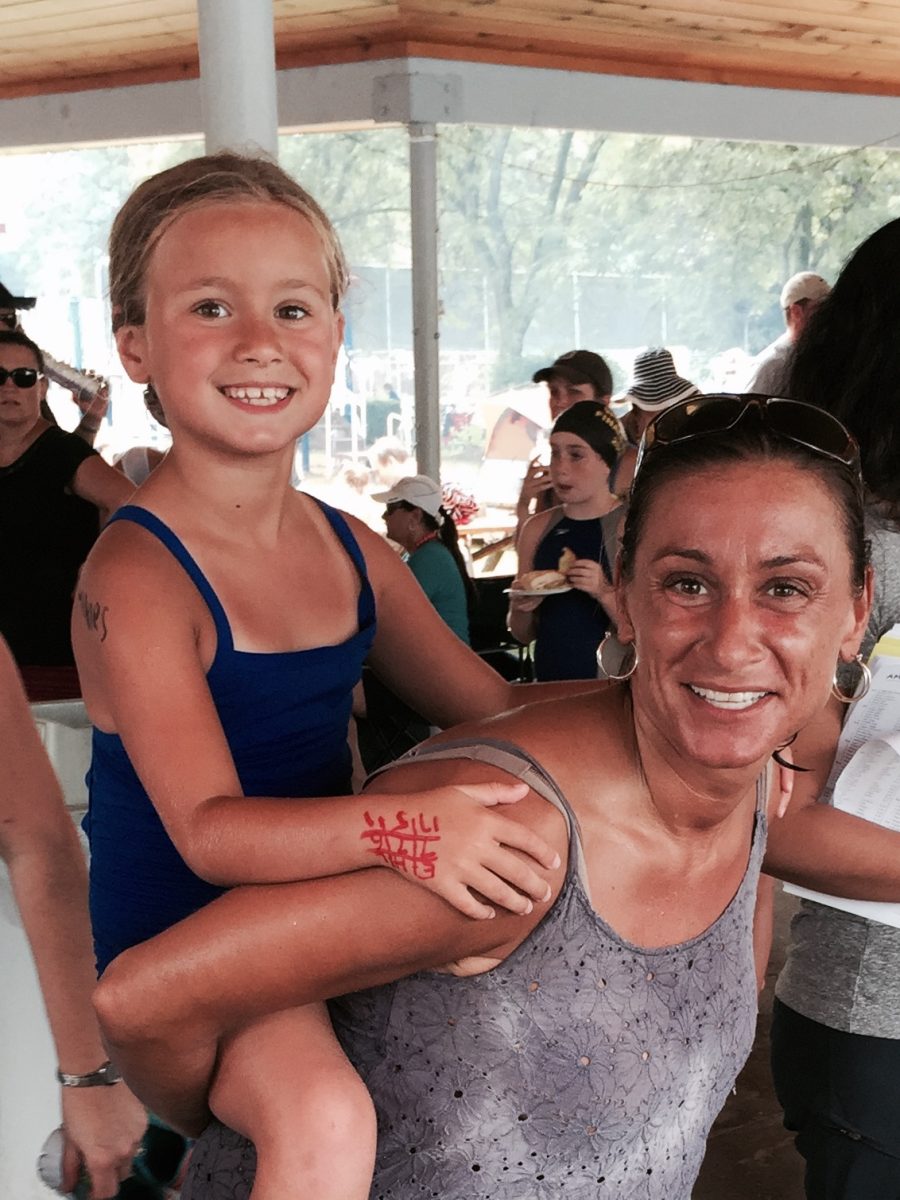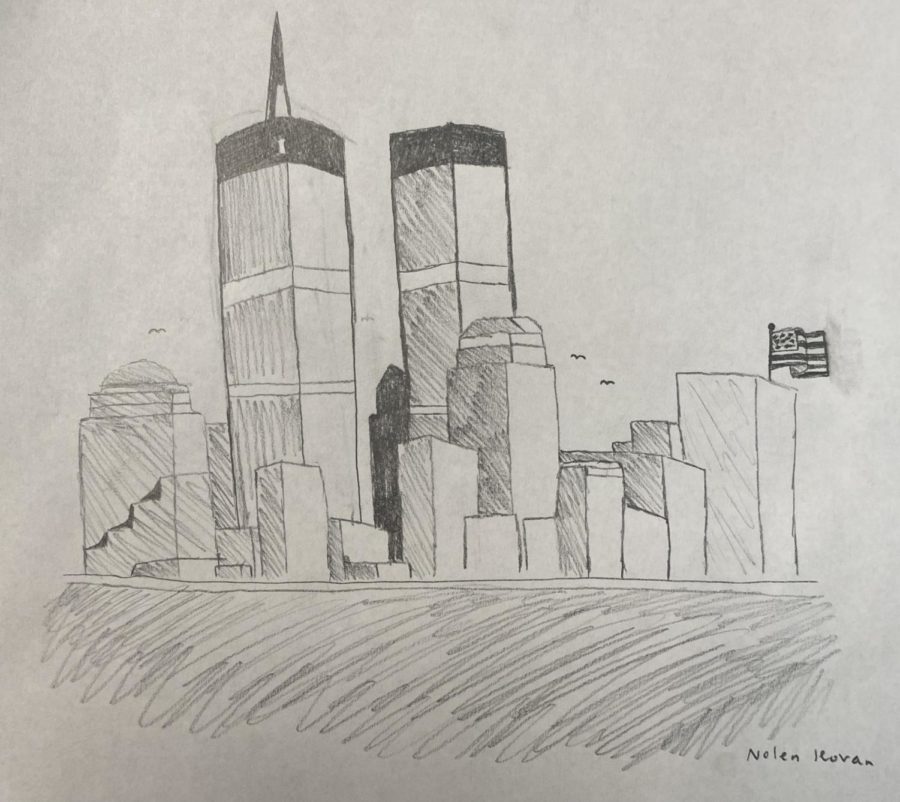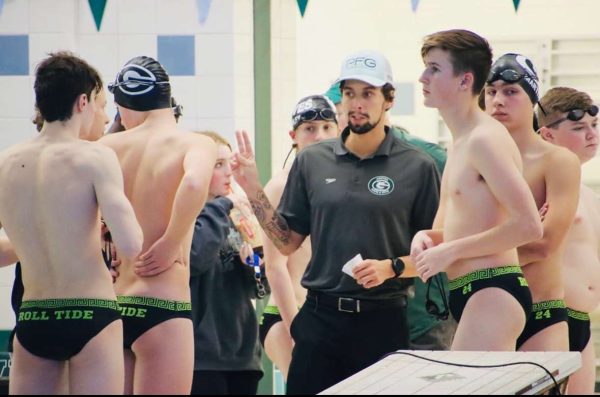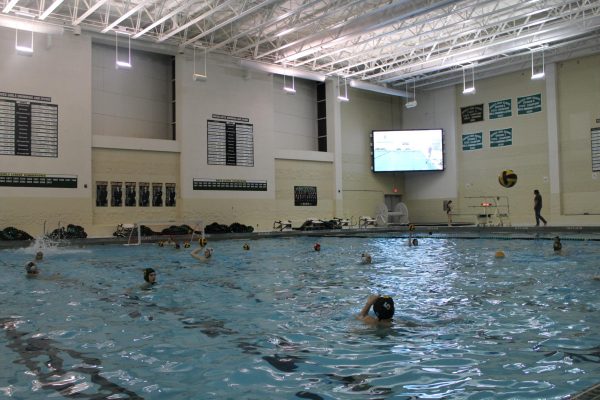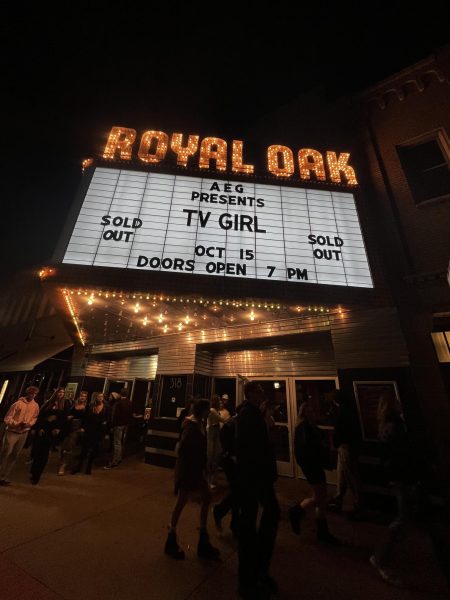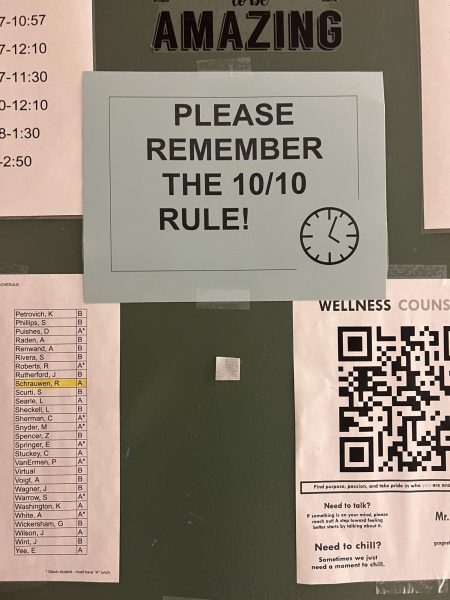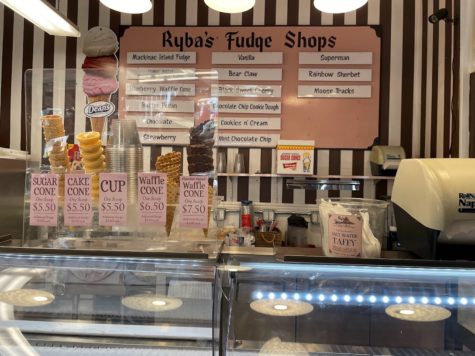Two decades later, staff reflects on loss that still lingers post 9/11
The Twin Towers hover over Manhattan, New York in a sketch by junior Nolen Kovan. The Twin Towers were two of the seven office buildings in The World Trade Center complex, and even prior to the September 11 attacks, the most influential. These monumental structures and popular tourist attractions were one of the three sights destroyed on September 11. A single skyscraper, which we solely call, the World Trade Center, has replaced the Twin Towers near where they once stood.
Twenty years later many who are now part of our school still feel the shock.
September 11th, 2001. Sometime after 9:10 a.m. Cries echoed across the building followed by unforeseen silence and disbelief.
Administrative assistant Terri Grantling was checking into her daily shift at Xfinity’s Customer Service Center when American Airlines Flight 767 hurled itself into the north tower of New York’s World Trade Center. Surrounded by 300 of her fellow employees, she watched in horror at the towers collapsing in flames on the TVs propped above their cubicles.
“That was September 11: a day in history I’ll never forget,” Grantling said.
Photography and ceramics teacher Veronica Belf was spending her prep period in the cafeteria of East Detroit High School when a friend approached her table, quick to describe what she had just witnessed on one of the national news networks. She immediately made her way to her teaching partner’s classroom and interrupted the lesson so students could stay engaged in America’s unfolding events. All she could focus on was how to keep the adolescent students, and their emotions, under control.
“I just wanted to tell my teaching partner so he could turn on the TV and watch it with all the students. We didn’t know what was happening,” Belf said.
English teacher Amy Voigt was mid-lesson when she heard of the first attack. A student who had been recycling papers, returned after a few trips, breaking the news with: “something happened in New York”.
Across the country, students, teachers, public service workers-everyone, braced themselves for the next news report as they sat in disbelief. A series of teachers in different areas of the country and, yet, they’re all affected quite the same. Our country was turned upside down, and the individual reflections amongst teachers at Groves highlight the personal and lifestyle changes that resulted from those haunting hours.
Grantling described the moments following the first strike to the north tower. She experienced reactions firsthand. With customers on the phone, she listened as they watched in disbelief. Grantling also witnessed the heartbreak of co-workers as they tried to get ahold of their loved ones in New York City.
“People had family members who worked in the building that was hit. We were on the phone with customers with dead silence and astonishment. We had no clue what had just occurred. We watched coverage of the attack on America and it was horrible. So many lives were lost, men, women, and children. We held each other tight and prayed that we would be safe. We watched the news nonstop for about two weeks. The coverage was so very sad and painful to watch. So many people were grieving,” Grantling said.
With phone lines jammed, Grantling struggled to reach her husband. She was afraid of any other attacks happening after witnessing the destruction in New York. Living near a major city, residents of metro Detroit were terrified. They all wondered if their area was going to be hit next.
“I suspect everyone in Michigan was trying to reach loved ones. We were then told we could leave early and it was standing only traffic on the M-14 highway. I got off and took the streets home. It was a long scary drive and I still couldn’t reach my husband or family members by phone…We had no clue what had just occurred! We were definitely scared and afraid of what could happen,” Grantling said.
Grantling was not alone in her confusion. Streets were crammed, and with minimal coverage on the events unraveling across the country, the majority of Americans could not help but ponder the thought of what was going to happen next. Helpless, Americans were forced to sit and watch the chaos unfold.
“It’s the kind of thing like if a swarm of bees comes into the room, you don’t know where to run and you don’t know where to look. So you kind of run in circles a little bit and then you try to latch onto the things you know you can control. We tried to keep schools as normal as possible. Some parents were picking up their kids, some parents wanted their kids to stay here [in school] because they know a school is a safe place. It was the kind of thing where the day felt like forever even though it didn’t last any longer than a regular day,” English teacher Amy Voigt said.
To feel more secure, Voigt focused on what she could control. With her son down the hall in Grove’s Wee Care Center, Voigt visited her child. Seeing her youngest helped distract Voigt from the vulnerability she felt in those moments.
“I was able to go as a mom, and put my hands on my baby which was really helpful. My husband and I talked back and forth over the course of the day about whether we should go get our first-grader over at West Maple Elementary School. In the renaissance building, there were a number of women who had children in daycare in Canada. They closed the border, so they couldn’t go home to get their children,” Voigt said.
Voigt felt privileged by her ability to locate her family so easily. Mothers across the country were left wondering if their partners and children were even alive.
Voigt described the moments between discovering what had happened, and spreading information, with ease, but still with uncanny feelings. Being a past New Yorker, she recognized the scenery being shown on TV. She watched as memories from her adolescent life were covered in piles of ash and rubble.
“I was moving from one classroom to another. I was unpacking some boxes and had a student assistant who was helping me. He was going back and forth from the recycling. He came in one time and he said ‘I think something happened and I said ‘what do you mean?’ and he goes ‘something happened in New York,” Voigt said.
Knowledge of the attacks spread like wildfire. History teacher Geoff Wickersham will never forget learning about the first tower. The moment that Voigt came into his room marked a shift for not only Wickersham but the entire country. Lesson plans for the day were brought to an abrupt stop, along with the routines of Americans. The devastation, however, never came to an end.
Wickersham recalls a sense of numbness across the school, and how the remainder of the day was spent simply with students and staff recollecting their thoughts.
“There was a lot of sitting around and talking and processing with the kids. We recognized that this was a historical event. We had just lived through something horrible in history. There were a number of kids that got taken out by their parents out of school. Their parents came and took them home out of fear,” Wickersham said.
Wickersham describes another serious precautionary measure such as the school shutting down the open lunch privilege, where older students can leave the campus and travel locally to get themselves lunch.
“We had no idea if there were gonna be planes hitting Detroit or Chicago or wherever so there were a lot of unknowns and in order to keep everyone safe we shut down the option for open lunch. There was one kid who was like ‘aw man that’s stupid.’ The other kids jumped on him and called him crazy,” Wickersham said.
Rumors tore through news outlets as well. Miscommunications and headstrong ideas from all different sources caused unnecessary panic.
“I had a couple of desktops and a few kids were looking for information, there was a new report that a car bomb blew up in front of the state department and that was false. It was published quickly on ABC or CNN then got taken down. There were a lot of rumors. Like ones that there were 13 planes in the air after the 3 that hit the buildings. We learned that later there was one that crashed in Pennsylvania. So we spent a lot of time talking,” Wickersham said.
Wickersham, along with a lot of the rest of the country, tried to remain calm but something like this was hard to suppress. Americans saw the attack as a means for war, and chaos. Like most, Wickersham felt a sense of panic and reacted in a way that puts these emotions into perspective.
Photography teacher Veronica Belf was spending her prep period in the cafeteria of East Detroit Highschool. Her initial experience consisted of watching the footage of the first tower’s demolition on TV. She lingered in the cafeteria with fellow co-workers before rushing to her teaching partner and informing him of the news. Belf was pregnant at the time. Her daughter is now a young adult, but in the cafeteria, a fellow teacher made a remark that will stay with Belf forever.
“My friend says to me [In the cafeteria] ‘Hopefully that’s a girl because you don’t want your son to be drafted and have to go to war’. At first, I thought ‘What is he talking about? Are you kidding me? By the time she’d have to be drafted, it would be 15-twenty years from now!’ But here we are, all these years later. We’re still dealing with that same war and issues,” Belf said.
Belf thought for sure that the events of 9/11, and even the aftermath would be resolved by the present day. Twenty years later and the United States has just recently withdrawn its troops from the country of Afghanistan. Twenty years later and people of middle eastern descent, all over the world, still face severe discrimination. Twenty years later and airport security continues to advance in technology. Prior to 9/11 airport rules and regulations were more relaxed than ever before. You could pass through airport security, and walk your family members to the gate. You could stand by the window at each terminal and wave your loved ones goodbye as the plane made its way off the runway.”
Belf even remembers her mom, an artist, and how she used to pass the time on each flight by completing some of her wood carvings on the plane.
“She would bring her Exacto knife on the plane and actually carve a piece because they would be like 4-hour flights. I remember security not making a big deal about these things. Now I talk to my kids and let them know [if they’re pulled aside at security] not to freak out or anything. I tell them to be serious, and not to make any jokes,” Belf said.
It is difficult for an entire generation of children and young adults to imagine a time when security wasn’t a long process. When you didn’t have to schedule your entire airport routine around getting through security in time to catch your flight. When you didn’t have to remove your shoes, drinks, food, phones, bags, even pets, in order to make sure airports were as safe as possible. The security aspect in airports provides some reassurance that nothing like September 11 could happen again. Safety lectures, and the swarm of security guards that surround the narrow magnetic tunnel your backpack travels through, serving as small memorials that place emphasis on those who died for travelers to see and think about.
It’s even more difficult for teachers and adults to have to describe an entire lifestyle to a new generation of children who were merely just an idea, maybe not even, at the time of 9/11.
“Over the last twenty years, the bombing sites have become memorials, museums have been set up, people go to pay respects. At the same time, I’m teaching an entire generation of kids who weren’t born when that happened. Believe me, it makes me feel old,” Voigt said.
One of the best ways for this new generation of children and students to gain somewhat of an understanding of that span of months would be through visuals. The 9/11 memorial museum is filled with metal scraps, pictures, voice memos of passengers, their last words, and even a fire truck.
One thing those museums can’t provide is the sense of loss our staff members felt that day. They can not provide the silence nor the agony of our society in those following weeks. They can not provide the chaos, the panic, or even the patriotism that fled the streets of major cities across the country.
Belf recalls the nationalism she felt around her local area following the attack.
“Everyone put their flags up. Every person. We always put our flags up for the Fourth of July, or memorial day, but I would drive down the street and the thought gives me goosebumps. Everyone had their flags up that day,” Belf said.
The togetherness of the country, grieving, supporting, honoring, words cannot describe the power the country held, and the feeling of hope in which these actions provided.
Belf remembers how not only citizens of Michigan, but almost every state in the US, dropped everything, pausing their lives for the sake of others.
“So many people lost so many people: friends from the World Trade Center. What I think was amazing was the Call of Duty. People that were here, in Michigan, that just got in their trucks and drove out [to locations where the attacks occurred] to go help. They didn’t even know where they were helping, or what they were doing. They just felt so passionate that something had to be done, and that they could help. There is something that they feel so strongly about, that they need to take action whether that’s bickering or rioting, or more in the helpful sense, with the Red Cross. I can’t even imagine myself getting in my car and driving out there, figuring out where I’m gonna stay, and just helping people. Incredible,” Belf said.
Families were forced to continue their day. There was nothing they could do but await instruction on the status of the country. Airways, roads, trains, buses-all forms of public transportation were shut down entirely. Belf remembers the silence.
“I didn’t realize how loud helicopters are going over to give us the news or the highway update,” Belf said. “Then, of course, when you would hear the fighter planes go over, you just got this eerie feeling, knowing they were flying because of the attacks.”

Children couldn’t bear to even watch TV because the footage was too traumatic. Voigt recalls hearing a story about a young girl who had lost her father in the towers.
“I remember hearing an interview about a teenager whose father died in one of the towers and she said; ‘I can only watch the Food Network because it doesn’t show my dad dying over and over.’ I can’t imagine if someone in your family died and you had to watch it over and over again on television. For twenty years now, we’ve been watching the same images,” Voigt said.
As a result of Islamist terrorist group Al-Qaeda’s attacks on the US, many middle eastern American’s were facing the harshest of backlash from fellow Americans who felt that these people had some sort of involvement strictly because of their heritage. This was far from the case.
For this reason, Voigt strives to incorporate equality into her lesson plans.
“I think it’s really important to recognize that the majority of people in America and the majority of the people in the world are good. That one ethnicity does make them a bad person. I try to explain that the best I can to my students; that most people in the world want the same thing everyone else does. They want their children to be happy. They want their children to have a good future. They want their environment to be clean. I worry that the anger and the political rhetoric supersedes that, it takes over, and I would like us to be able to talk to each other better,” Voight said.
With the grief, fear, and anxiety the attacks brought about, there were pockets of peace. Communities across the country continued to mourn, and rebuild what they had lost.
Anthony Boyd, Grove’s front desk security, found his peace through religious gatherings.
“I remember that next day I went to church, and we prayed and prayed and prayed. It was just unbelievable, as far as the death toll. I never thought in my lifetime that I would see something like that actually happen in the United States,” Boyd said.
Boyd and many other Americans were bombarded with the sudden realization that the United States was capable of being put in such a vulnerable state, and that enlisted a lot of fear. But this devastation brought about pride among the citizens of the United States and the country’s allies.
“We remember. We remember the 2,966 lives lost in The Twin Towers, The Pentagon, and Somerset, Pennsylvania. We remember the 343 firefighters and first responders, who risked their lives for the sake of others. We remember the brave passengers who comforted their loved ones through the phone as their plane plummeted towards the unknown. We remember the 44 brave passengers of United Airlines Flight 93, who re-routed an entire plane and prevented a fourth attack on the US Capitol building. They, too, saved thousands. Amidst such horrendous agony came a light-a glimmer of hope. A glimmer of resilience, a glimmer of peace, structure, and unity,” Boyd said. “The attacks impacted everyone: from the families of lost loved ones to a high school in Beverly Hills, Michigan. They say what doesn’t kill you makes you stronger. It’s been twenty years, and our strength and patriotism grow with every setback and step forward. Each year on September 11, we shine two piercing lights up into the sky where the towers once stood as a reminder that this happened, and this was devastating. We remind the public of our efforts to keep the peace among all, and the lights intend to trigger a day of mourning, and remembrance. We grow closer as a community. The teachers at Groves Highschool make it their priority to implement these lessons and reflections into their teachings. We never forget.”
Your donation will support the student journalists of Wylie E. Groves High School. Your contribution will allow us to purchase equipment and cover our annual website hosting costs.


